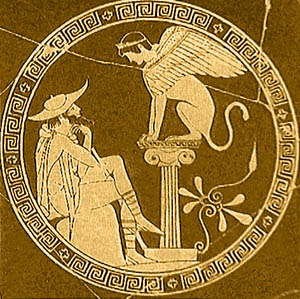 In my previous post I issued a strong warning against allowing the church’s “rule of faith” be the determining factor in our interpretation of the New Testament. Such a move muffles the voice of the ancient text, and it muffles the voice of the modern interpreter. It extends its hands in both directions at once, colonizing the voices of God’s people by then hands of the ancient elite few.
In my previous post I issued a strong warning against allowing the church’s “rule of faith” be the determining factor in our interpretation of the New Testament. Such a move muffles the voice of the ancient text, and it muffles the voice of the modern interpreter. It extends its hands in both directions at once, colonizing the voices of God’s people by then hands of the ancient elite few.
Somehow the words of Karl Barth are echoing in my mind: Well roared, lion!
Several folks criticized the post for ignoring the fact that proclamation and creed came before canon. In other words–the Rule of Faith formed the text, and now I’m saying to ignore the mold in favor of what it formed. Then there was the pesky question of whether there isn’t any place at all for such a Rule in our reading.
Maybe the overarching suggestion is this: there has to be a better way to integrate the historical realities and historical roots of where we’ve come from into our biblical interpretation. Or, is there not a place for the Rule which helped give us the text in a post-colonized interpretation of the Bible?
No Canon without the Creed
The proclamation of the early church came into being before there was any New Testament. As disputes arose about teachings and holy books, appeal was made to the common teachings and readings shared throughout the church.
In the second century and following, the “measure” which was the common faith of the church played one very important role: it demanded that the creator God be acknowledged to be the same God and Father of our Lord Jesus Christ who provided our way of salvation.
I don’t want to lose that.
But that was a second- through fourth-century question. Things get more complicated when a Rule of Faith framework begins to take on greater theological specificity.
Have you ever noticed, for instance, that the Apostles Creed isn’t inherently Trinitarian? Yes, it has a triune structure. But, like scripture itself, it retains the title of “God” for the Father and does not deploy it of the Son. We read it as Trinitarian because we assume the Trinity. We’ve colonized our own creed.
That’s an illustration of what has happened on the forward-moving direction. The theological convictions of the church, and of its various, myriad groups, have continued to grow. And as they’ve grown, the members of those groups have continued to insist that their theological perspectives are those of the Bible. What, then, is the rule of faith by which scripture must be read? Is it the later Trinitarian creedal tradition? Is it the Confessional tradition of anyone’s own branch?
The further along we go, the harder it is to claim that this “rule” is capable of ruling our readings of the assembled texts.
Oedipus Text
There’s a more snide response to my post that came up as well. It was along the lines of, “As if the texts that were gathered on the basis of this rule don’t say exactly what the Rule of Faith claims.” 
To which my snide response is: Just because you make the child doesn’t mean he can’t rise up and kill you.
The Rule of Faith makes a claim, that claim is, “If you ask the text, this is what it will tell you.” It also makes the claim, “This is what it must tell you if you want to be reading according to the rule.”
It is possible, however, that times will arise when those things will stand in tension.
It is possible, like someone calling a witness they are sure will be on their side, that the text will disclose something surprising, something unexpected, or something that does not fit the proffered narrative.
Pinning down what the “Rule of Faith” actually is is its own slippery exercise. But I find the line from the Apostles Creed, “he descended into hell” to be instructive on this point. It’s in the Creed, so everyone has to say it and say it’s right. And the history of interpretation of that phrase is litany of people trying to reinterpret a phrase that nobody actually agrees with so that it can mean something that we do.
The text and the tradition can both rise up against the rule.
But there are two problems in using the Rule of Faith as a hermeneutic, in demanding that all texts be conformed to its image. First, it prevents us from genuinely encountering the word of God as it might be spoken in and through those texts. But this can only happen for so long. People will eventually say, “That’s not what it says.” The text can rise up and kill its master. Or, perhaps, show that its master has been abusing it.
Sometimes people got things wrong. Sometimes the ancients thought, for instance, that Paul was the author of a text and therefore included it in the canon, whereas we know now that at points this judgment was mistaken. And sometimes an ancient reading of the text might not accurately represent what the author of that text intended, or what a first century audience was likely to hear.
Second, the Rule of Faith circumscribes the hermeneutical possibilities to the convictions of overeducated citizens of the second through fourth century Roman world around the Mediterranean basin. As I asserted in my earlier post, this is problematic both because that perspective might miss the perspective of first-century Jewish writers and also because it eliminates voices that might better replicate the narrative of the Lord and of Her Christ in other ancient and modern contexts.
The problem isn’t that there were general contours of ancient preaching that guided biblical interpretation, the problem is when we adopt those ancient contours as hermeneutics to which our own readings must always conform.
Rule of Faith in the Interpretive Spiral
In order to keep the textual tiger from getting backed into a proverbial corner and turning on its would-be keeper, the Rule of Faith, as well as our lesser theological traditions to which we are all committed, can never be given the place of final hermeneutical authority.
Our rules of faith must be taken off their pedestals and made conversation partners in an on-going hermeneutical spiral.
To put it somewhat differently: we have both a theological and moral obligation to engage in multiple readings of the biblical texts.
If we are going to extend charity to the biblical writers, we must love them as we would love ourselves and listen to what they actually have to say–which is, as often as not, somewhat different from what we have to say.
If we are committed Christians, then any reading of the Old Testament, especially, has to be revisited in light of the claim that Jesus has brought the story of God’s saving work in Israel to its appointed climax.
For me, the story of Jesus’ life, death, and resurrection comprises the story within the story, and I will allow this to recontextualize and fill out even NT passages that do not work out the implications of the s tory with sufficient clarity. (Luther was right: was Christum treibet (what promotes or “drives” Christ) is not only a measure of how faithful a passage it, it’s how we should leverage passages that fall short.) Yes, I would read Jesus into the book of James if I preached it.
So we let the Bible have its voice, and we let the biblical story play out and contextualize its various parts.
And then there are the readings that we will bring based on where we are located. For many of us this means a Trinitarian context and one in which the divinity of Jesus stands front and center. But maybe what happens is that because we were willing to listen to the text itself we’ve started to develop a richer appreciation for Jesus’s humanity before we have provided our second reading that fills in the story with his preexistence and divinity.
For many of us, the empowered western theological edifice as a whole is completely strange and devoid of contact with the ground we walk. So we might leave side that stream that ran through the creeds and pursue a stream that has run beneath the surface, invisible because not given voice. We might acknowledge the ways that “kingdom” language has the power to perpetuate patriarchy, but show how the empowerment of men and women by the Spirit on Pentecost subverts patriarchal hegemony like the one that has upheld even the church’s orthodoxy.
And then, of course, we have to return to the text and start again. We might begin to see that after going through the spiral that our first assumption about the text itself, or the significance of the Christ event, or the significance of our tradition was skewed. Or we realize we focused on the wrong part. Or we realize that the particular tune we had in our head made us deaf to the harmonies playing out all around us.
The Problem with Rules
The problem with rules is that they show us who has broken them. The problem with rules in the church is that the keeping of them becomes the measure of fidelity to the Christian message.
The problem with a rule of faith is that it makes biblical interpretation that shows someone thinks the right thing to be the measure of whether they are a Christian. The problem with measuring people by whether or not they think the right thing is that it creates a Christianity in which literally anything we do is ok just as long as we are defending and upholding the teachings we believe to be true.
When God wanted to show us what God was like, God send a person. When God wanted us to understand God’s posture toward humanity, God initiated and superintended a story. It is the story of the healing, exorcising, feeding, betrayed, suffering, dead, and risen messiah.
It is a story that shows us what it means to be the people of God.
It is a story that the rule of faith gestures toward but cannot capture. It is a story that shows us, repeatedly, that trying to square its circle with presumed rules and with exertions of power can never finally succeed.












